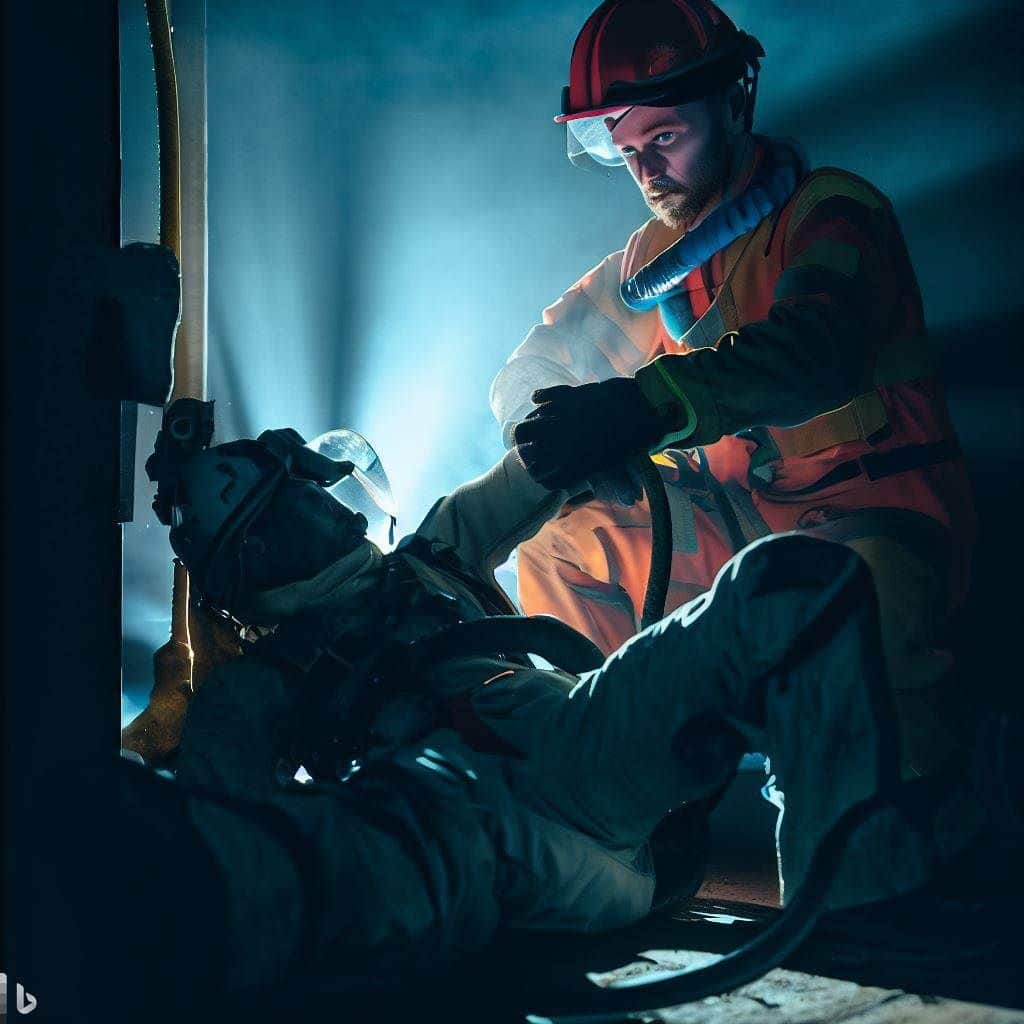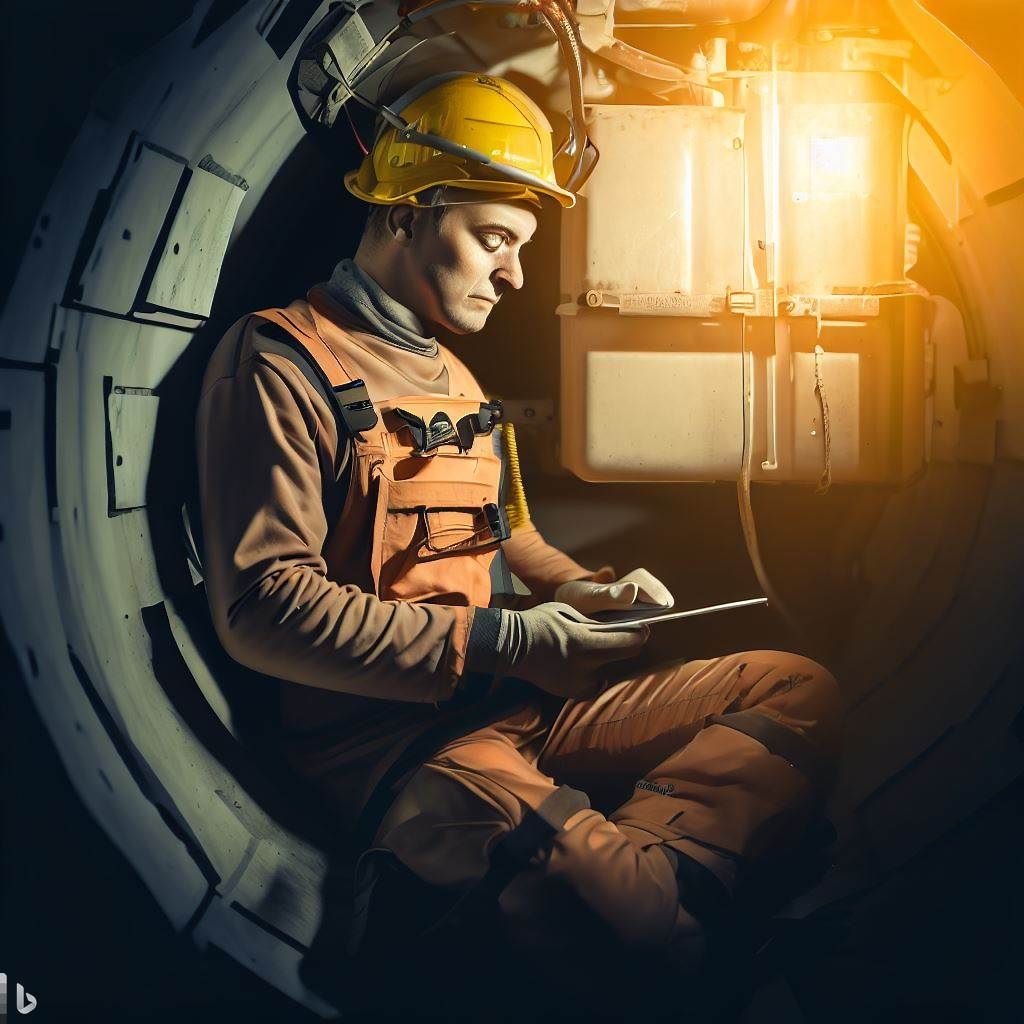Understanding Confined Space Accidents: Causes, Prevention, and Safety Measures
Confined space accidents are tragic events that can result in severe injuries and fatalities. These accidents frequently occur in areas with limited access, where there may be significant hazards, such as toxic gases, low oxygen levels, or other dangers.
The nature of confined spaces often makes them difficult to enter, work in, and exit, exacerbating the risks and complexities associated with these accidents. This article will provide an in-depth understanding of confined space accidents, their causes, and the necessary prevention and safety measures that can be taken to protect workers and prevent tragic incidents.
Common causes of confined space accidents
Confined space accidents can occur for a variety of reasons, but some of the most common causes include:
- Lack of oxygen: Oxygen deficiency is a significant concern in confined spaces, as it can lead to unconsciousness, brain damage, and death. This may be due to the natural depletion of oxygen in the area or from the displacement of oxygen by other gases.
- Toxic gases: Hazardous gases in a confined space can lead to poisoning, asphyxiation, or other serious health issues. These gases may be generated by processes within the space, such as chemical reactions or combustion, or they could seep in from the surrounding environment.
- Fire and explosions: Combustible materials, flammable gases, and oxygen-rich environments can create a perfect storm for fires and explosions in confined spaces. These incidents can be particularly devastating, as the confined nature of the space can make it difficult for workers to escape and emergency crews to respond.
- Engulfment and entrapment: Workers can become trapped or engulfed by materials, such as liquids, solids, or flowing substances, within a confined space. This can lead to suffocation, crushing injuries, or drowning.
- Falls and falling objects: Slips, trips, and falls are common hazards in confined spaces, especially if the area is not well-maintained or workers are not adequately trained. Falling objects can also pose a severe threat, as they may strike workers with great force or trap them beneath debris.

The dangers of confined spaces
The dangers associated with confined spaces are numerous and can be exacerbated by the unique characteristics of these environments. Some of the most significant hazards include:
- Restricted access and egress: The limited entry and exit points in confined spaces can make it difficult for workers to evacuate quickly in an emergency and rescue personnel to reach those in need. This can lead to delayed incident response and potentially worsen the outcome.
- Poor visibility and communication: Confined spaces often have limited lighting and may be filled with dust, smoke, or other obstructions that can impair visibility. This can make it difficult for workers to see hazards and for supervisors to monitor their activities. Communication can also be challenging, as the enclosed nature of the space can interfere with radio signals or make it difficult to hear verbal instructions.
- Psychological and physiological stressors: Working in confined spaces can be mentally and physically demanding, as workers may experience feelings of claustrophobia, anxiety, or fear. The physical demands of working in awkward positions or extreme temperatures can also take a toll on the body, increasing the risk of injuries and accidents.
Regulations and standards for confined spaces
Government agencies and industry organizations have established various regulations and standards to help protect workers and prevent confined space accidents. In the United States, the Occupational Safety and Health Administration (OSHA) has developed rules that govern identifying, assessing, and controlling hazards in confined spaces. These regulations include provisions for worker training, hazard communication, permit systems, and rescue procedures.
In addition to OSHA regulations, other organizations, such as the National Fire Protection Association (NFPA) and the American National Standards Institute (ANSI), have developed guidelines and consensus standards for confined space safety. These standards provide additional guidance and best practices for managing confined space hazards and protecting workers.
Identifying and assessing confined spaces
The first step in managing confined space hazards is identifying and assessing the confined spaces within a workplace. This process typically involves:
- Identifying potential confined spaces: Reviewing facility layouts, blueprints, and process diagrams can help to identify areas that may qualify as confined spaces. These spaces may include tanks, silos, vaults, tunnels, pits, or other enclosed or partially enclosed areas.
- Evaluating the hazards: Once potential confined spaces have been identified, it’s essential to assess the specific risks that may be present. This may involve air monitoring to determine the presence of toxic gases or low oxygen levels and assess physical hazards, such as engulfment or entrapment risks.
- Classifying confined spaces: Based on the hazards identified, confined spaces can be classified as either permit-required or non-permit-required. Permit-required confined spaces have one or more serious hazards that necessitate a written permit program to control access. In contrast, non-permit-required confined spaces do not have these hazards but require appropriate safety precautions.
Confined space accident prevention strategies
Preventing confined space accidents requires a comprehensive approach that addresses the various hazards and challenges associated with these environments. Some key prevention strategies include:
- Establishing a permit system: A permit system can help control access to permit-required confined spaces and ensure appropriate safety measures are in place before entry. This may involve verifying that the space is safe to enter, ensuring that workers are appropriately trained and equipped, and monitoring conditions within the space during entry.
- Implementing engineering controls: Engineering controls, such as ventilation systems, can help to mitigate hazards within confined spaces. For example, mechanical ventilation can help to remove toxic gases and maintain acceptable oxygen levels, while physical barriers can help to prevent engulfment or entrapment.
- Developing safe work procedures: Establishing clear, written procedures for confined space work can help workers understand the hazards and the necessary precautions. These procedures should outline the steps for entering, working in, and exiting confined spaces and the appropriate use of personal protective equipment (PPE) and other safety measures.
- Monitoring and communication: Monitoring the conditions within a confined space during entry is critical for ensuring worker safety. This may involve continuous air monitoring, visual inspections, or other environmental assessment methods. Effective communication is also essential, enabling workers to share information about hazards and coordinate their activities.
Essential safety measures for confined spaces
In addition to the prevention strategies outlined above, several essential safety measures should be implemented to protect workers in confined spaces:
- Personal protective equipment (PPE): PPE, such as respirators, protective clothing, and fall protection gear, can help to protect workers from the hazards present in confined spaces. The appropriate PPE should be selected based on the specific risks and conditions in the space.
- Emergency and rescue planning: A well-developed emergency and rescue plan is crucial for responding to confined space accidents. This plan should outline the procedures for evacuating the space, providing first aid, and summoning emergency personnel. It should also include provisions for training and equipping rescue teams and conducting drills to ensure they are prepared for real-life situations.
- Training and certification: Ensuring that workers are properly trained and certified for confined space work is essential for reducing the risk of accidents. This training should cover hazard recognition, safe work practices, emergency procedures, and the proper use of PPE.
Training and certification for confined space workers
Workers must be properly trained and certified to work safely in confined spaces. Confined space training typically covers the following topics:
- Hazard recognition: Workers must identify the hazards associated with confined spaces, such as oxygen deficiency, toxic gases, engulfment, and entrapment.
- Safe work practices: Training should include instruction on the proper procedures for entering, working in, and exiting confined spaces, as well as using PPE and other safety measures.
- Emergency procedures: Workers must be familiar with the emergency and rescue procedures outlined in their company’s confined space program, including evacuating the space, providing first aid, and summoning emergency personnel.
- Rescue team training: Members of confined space rescue teams should receive specialized training in rescue techniques, equipment, and procedures. This may include hands-on practice with rescue equipment, simulations, and drills to test their skills and response capabilities.
Certification is typically issued upon completing confined space training and may be required by regulatory agencies or industry standards. In the United States, OSHA does not provide specific certification requirements but does mandate that workers be properly trained and competent to perform their job tasks safely.

Case studies: confined space Accidents and lessons learned
Examining real-life confined space accidents can provide valuable insights into the causes of these incidents and the necessary measures for preventing future tragedies. Some notable case studies include:
- Princeton Junction train station accident (2006): Two workers were killed in this incident, and a third was injured when they entered a manhole to repair a broken sewer line. The workers were overcome by hydrogen sulfide gas accumulating in the confined space. The investigation revealed that the workers had not been properly trained in confined space safety, and the company had not implemented a permit system or provided appropriate protective equipment.
- Xcel Energy Cabin Creek hydroelectric plant accident (2007): Five workers died in a fire while performing maintenance work in a confined space. The ignition of flammable liquids caused the fire, and the workers could not escape due to the confined nature of the space. The incident highlighted the importance of hazard communication, proper ventilation, and emergency planning in confined space work.
Conclusion and key takeaways
Confined space accidents can have devastating consequences but can be prevented through proper planning, training, and safety measures. Key takeaways for protecting workers and preventing accidents in confined spaces include:
- Identifying and assessing confined spaces to determine the hazards and necessary precautions
- Implementing a permit system to control access and ensure that appropriate safety measures are in place
- Addressing hazards through engineering controls, safe work procedures, and PPE
- Ensuring that workers are properly trained and certified for confined space work
- Developing a comprehensive emergency and rescue plan
By taking these steps, employers can help create a safer work environment and protect their workers from the hazards of confined spaces.
Frequently Asked Questions:
Q: What is a confined space?
A: A confined space is an enclosed or partially enclosed area not designed for continuous human occupancy and has limited or restricted means of entry and exit. Confined spaces may include tanks, silos, vaults, tunnels, pits, or other areas.
Q: What are the main hazards associated with confined spaces?
A: Some of the most common hazards in confined spaces include oxygen deficiency, toxic gases, fires and explosions, engulfment, and entrapment, and falls and falling objects.
Q: What are the key elements of a confined space safety program?
A: A comprehensive confined space safety program should include the identification and assessment of confined spaces, the development and implementation of a permit system, hazard control measures, worker training and certification, and emergency and rescue planning.
Q: How can workers be protected from confined space hazards?
A: Workers can be protected from confined space hazards through engineering controls, safe work procedures, personal protective equipment, and proper training and certification.
